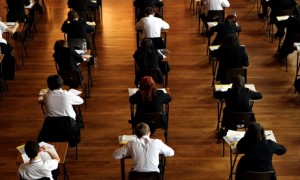
Disadvantaged Youth in London Outperform Most Students
According to a study published Monday by the Institute for Fiscal Studies (IFS), most kids from disadvantaged backgrounds are outperforming their peers with more resources. The IFS attributes this to the variety of kids attending schools in the disadvantaged schools of London as compared to other areas of the country. Furthermore, they say that the improvement in the primary school programs has highly impacted the way that kids are able to perform. The study was able to see that rapid increases in pupil performance, particularly in the disadvantaged sector, have been taking place since the early 2000s. This has been found to be most especially true in schools found in inner London.
The research showed that disadvantaged pupils in London achieved significantly better test scores than other kids in England. In 2012, for example 54% of inner London kids who were below the poverty line were able to attain GCSEs at scores of A-C, including English and Math whereas in outer London, only 47% of kids were able to do this—in the West Midlands, the rate was a lagging 40% and in other regions outside the capital, only 30-35% students were able to gain these GCSEs.
Of that 54%, 13% were included in the upper cusp, getting grades of A-B in 8 or more subjects including English and Math. This percentage is very high, especially compared to the rest of England where the statistic of kids with these kinds of scores are only 3-6%. The IFS speculates that this might have to do with higher levels of participation in schools where the environment is closer-knit.
The multicultural dimension is another thing which the IFS are taking into consideration. Asian immigrants throughout London have been performing very well. Their presence within the inner London schools might have to do with both the raise in statistics and the improvement of other students’ work. The study also showed that by the time most inner city kids are 11, they were already performing better in both English and Math than other kids throughout England.
The IFS paper was also able to look at where there was the most improvement. Very particularly, there was a big improvement in key stage 2 English scores for disadvantaged kids between 1999 and 2003. The same demographic was followed throughout the years and the same pattern was seen for stage 4 scores in the period of 2004-2008. Since 2003, key stage 2 math subjects have been consistently higher for London (particularly, inner London) compared to the rest of the country’s scores.
This trend of disadvantaged pupils doing well seems to be trickling into other parts of England, as well. The study found that as of 2013, there was also a huge increase in the test results of the disadvantaged kids from Manchester and Birmingham—although these were nowhere near the scores of kids from inner London, the study states that it’s definitely a good start.
Luke Sibieta, who authored the report and who currently sits as program director for the IFS says that the progress in inner London—most especially in secondary school, where most scores tend to dip elsewhere—is outstanding. He ends the report, saying that whatever is being done in London education-wise should definitely be done elsewhere if England wants to improve scores everywhere.
 + 1-888-827-0150
+ 1-888-827-0150 + 44-20-3006-2750
+ 44-20-3006-2750









